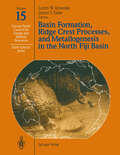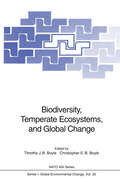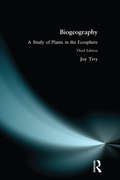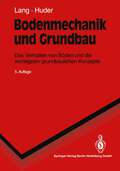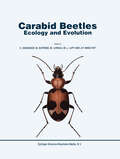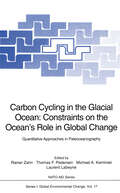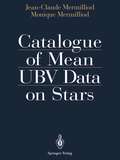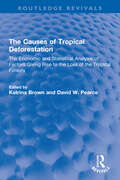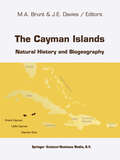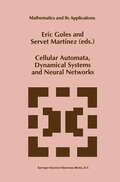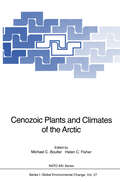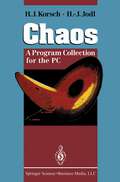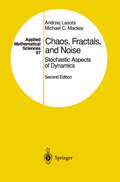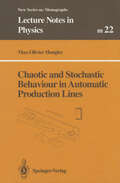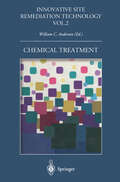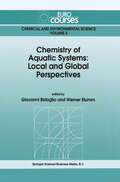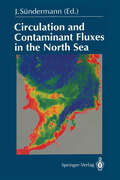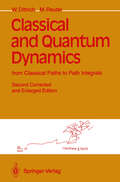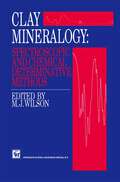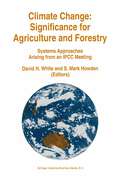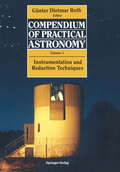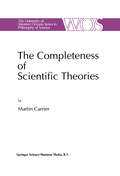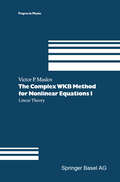- Table View
- List View
Basin Formation, Ridge Crest Processes, and Metallogenesis in the North Fiji Basin (Circum-Pacific Council for Energy and Mineral Resources. Earth Science Series #15)
by James V. Eade Loren W. KroenkeThe Earth Science Series of the Circum-Pacific Funding for ship time was made available through Council for Energy and Mineral Resources (CPCEMR) the U. S. Agency for International Development, the is designed to convey the results of geologie research in USGS, the U. S. Office of Naval Research (for HIG's and around the Pacific Basin. Topies of interest include 1982 work), the Australian Development Assistance framework geology, petroleum geology, hard minerals, Bureau, the Australian Bureau of Mineral Resources geothermal energy, environmental geology, volcanology, (BMR), the New Zealand Ministry of Foreign Affairs, oceanography, tectonics, geophysies, geochemistry, and the New Zealand Departrnent of Scientific and Industrial applications of renewable energy. The CPCEMR sup Research (DSIR), the New Zealand Geological Survey, ports and publishes results of scientific research that will and the New Zealand Oceanographic Institute (NZOI). advance the knowledge of energy and mineral resource Coordination of the program was provided by the U. S. potential in the circum-Pacific region. The Earth Sci Departrnent of State and the South Pacific Applied Geo ence Series is specifically designed to publish papers that science Commission (SOPAC, formerly the United include new data and new maps, report on CPCEMR Nations-sponsored Committee for the Coordination of sponsored symposia and workshops, and describe the Joint Prospecting for Mineral Resources in South Pacific results of onshore and marine geological and geophysieal Offshore Areas CCOP/SOP AC) in Fiji. Over 150 scien explorations.
Biodiversity, Temperate Ecosystems, and Global Change (Nato ASI Subseries I: #20)
by Timothy J. B. Boyle Christopher E. B. BoyleReviewed here is the current state of knowledge concerning the relationship between global change and biodiversity of temperate ecosystems. The aim is to improve the ability to conserve biodiversity under conditions of global change.The book focuses on:- The threats posed by global change to biodiversity in temperate ecosystems; - Levels and spatial patterns of diversity in temperate ecosystems; - The impact of global change on genetic diversity; - The effects of disturbance (natural and anthropogenic) on temperate ecosystems; - Existing research priorities and programmes.
Biogeography: A Study of Plants in the Ecosphere
by Joy TivyThe third edition of this classic text, presents a broad-based study of the variations in the form and functioning of the biosphere at regional and global scale.
Biogeography: A Study of Plants in the Ecosphere
by Joy TivyThe third edition of this classic text, presents a broad-based study of the variations in the form and functioning of the biosphere at regional and global scale.
Bodenmechanik und Grundbau: Das Verhalten von Böden und die wichtigsten grundbaulichen Konzepte (Springer-Lehrbuch)
by Ulrike ButzBodenmechanik und die daraus abgeleiteten grundbaulichen Konzepte sind die Themen dieses Lehrbuchs. Die Autoren folgen dem Ansatz, grundsätzlich alle Probleme auf der einfachsten, noch wissenschaftlich vertretbaren Basis zu behandeln und kommen damit vor allem dem Bauingenieurstudenten im Grundstudium und dem beruflich tätigen Praktiker entgegen.In die fünfte Auflage wurden zahlreiche Aktualisierungen und Verbesserungen aufgenommen. Neu hinzugekommen ist ein Abschnitt über die Einflüsse von Kohäsion und Auflasten auf Erddrücke. Der für die Anwendung besonders interessante Tabellenteil im Anhang wurde wesentlich erweitert.
Carabid Beetles: Ecology and Evolution (Series Entomologica #51)
by J-P. Maelfait K. Desender M. Dufrêne M. Loreau M. L. LuffCarbon Cycling in the Glacial Ocean: Quantitative Approaches in Paleoceanography (Nato ASI Subseries I: #17)
by Rainer Zahn Thomas F. Pedersen Michael A. Kaminski Laurent LabeyrieA comprehensive progress report on the multi-disciplinary field of ocean and climate change research is given. It compiles introductory background papers and leading scientific results on the ocean-atmosphere carbon cycle with emphasis on the ocean's carbon inventory and the various components involved. The relationship between plankton productivity, carbon fixation, oceanic PCO2 and climate change is investigated from the viewpoint of long-term climatic change during the late Quaternary cycles of ice ages and warm ages. The various approaches range from micropaleontology over organic and trace element geochemistry to molecular isotope geochemistry.
The Causes of Tropical Deforestation: The Economic and Statistical Analysis of Factors Giving Rise to the Loss of the Tropical Forests (Routledge Revivals)
The Causes of Tropical Deforestation (1994) is an analysis of the problem of deforestation, using statistical technique – a form of ‘environ-metrics’ – to discover the true causes of an issue whose basis is hotly debated, and attributed to causes as varied as poverty, external debt, multinational logging companies, government corruption, the IMF, population growth, and non-sustainable agriculture.
The Causes of Tropical Deforestation: The Economic and Statistical Analysis of Factors Giving Rise to the Loss of the Tropical Forests (Routledge Revivals)
by Katrina Brown David W. PearceThe Causes of Tropical Deforestation (1994) is an analysis of the problem of deforestation, using statistical technique – a form of ‘environ-metrics’ – to discover the true causes of an issue whose basis is hotly debated, and attributed to causes as varied as poverty, external debt, multinational logging companies, government corruption, the IMF, population growth, and non-sustainable agriculture.
The Cayman Islands: Natural History and Biogeography (Monographiae Biologicae #71)
by M. A. Brunt J. E. DaviesIn the course of the last century a considerable amount of scientific work has been carried out in the Cayman Islands. The results of this (outlined in Chapter 1) are widely distributed in unpublished reports, university theses, various scientific publications and books, many of these sources being difficult to find and some now unobtainable. The purpose of this book, therefore, is to bring all this scattered information together and to present a coherent account of the biogeography and ecology of the Islands, as an easily available reference source and as a foundation on which future work can be based.
Cellular Automata, Dynamical Systems and Neural Networks (Mathematics and Its Applications #282)
by E. Goles Servet MartínezThis book contains the courses given at the Third School on Statistical Physics and Cooperative Systems held at Santiago, Chile, from 14th to 18th December 1992. The main idea of this periodic school was to bring together scientists work with recent trends in Statistical Physics. More precisely ing on subjects related related with non linear phenomena, dynamical systems, ergodic theory, cellular au tomata, symbolic dynamics, large deviation theory and neural networks. Scientists working in these subjects come from several areas: mathematics, biology, physics, computer science, electrical engineering and artificial intelligence. Recently, a very important cross-fertilization has taken place with regard to the aforesaid scientific and technological disciplines, so as to give a new approach to the research whose common core remains in statistical physics. Each contribution is devoted to one or more of the previous subjects. In most cases they are structured as surveys, presenting at the same time an original point of view about the topic and showing mostly new results. The expository text of Fran
Cenozoic Plants and Climates of the Arctic (Nato ASI Subseries I: #27)
by Michael C. Boulter Helen FisherFifty million years ago, the Arctic Ocean was a warm sea, bounded by lush vegetation of the warm-temperate shores of Scandinavia, Siberia, Alaska and the Northwest Territories. Wind and storms were rare because Atlantic weather systems had not developed but, as today, polar day length added a hostile element to this otherwise tranquil climate.With the aid of scientists from all the countries close to the Arctic Circle, this book describes the palaeontology, the statistical analysis of vegetational features, comparisons with atmospheric, marine, and geological features and some of the first models of plant migration developed from newly constructed databases.
Chaos: A Program Collection for the PC
by H.J. Korsch H.-J. JodlAn outstanding selection of executable programs with introductory texts to chaos theory and its simulation. Students in physics, mathematics, and engineering will find a thorough introduction to fundamentals and applications in this field, backed by many numerical experiments and suggestions for further studies.Ten executable programs and numerous examples are included on two 3 1/2" MS-DOS diskettes.
Chaos, Fractals, and Noise: Stochastic Aspects of Dynamics (Applied Mathematical Sciences #97)
by Andrzej Lasota Michael C. MackeyThe first edition of this book was originally published in 1985 under the ti tle "Probabilistic Properties of Deterministic Systems. " In the intervening years, interest in so-called "chaotic" systems has continued unabated but with a more thoughtful and sober eye toward applications, as befits a ma turing field. This interest in the serious usage of the concepts and techniques of nonlinear dynamics by applied scientists has probably been spurred more by the availability of inexpensive computers than by any other factor. Thus, computer experiments have been prominent, suggesting the wealth of phe nomena that may be resident in nonlinear systems. In particular, they allow one to observe the interdependence between the deterministic and probabilistic properties of these systems such as the existence of invariant measures and densities, statistical stability and periodicity, the influence of stochastic perturbations, the formation of attractors, and many others. The aim of the book, and especially of this second edition, is to present recent theoretical methods which allow one to study these effects. We have taken the opportunity in this second edition to not only correct the errors of the first edition, but also to add substantially new material in five sections and a new chapter.
Chaotic and Stochastic Behaviour in Automatic Production Lines (Lecture Notes in Physics Monographs #22)
by Max-Olivier HonglerInspired by the general configuration characteristics of automatic production lines, the author discusses the modelisation of important sectors of a factory. Typical topics such as parts feeders, part orienting devices, insertion mechanisms and buffered flows are analysed using random evolution models and non-linear dynamical systems theory.
Chemical Treatment (Innovative Site Remediation Technology #2)
by William C. AndersonThis monograph on chemical treatment is one of a series of eight on innovative site and waste remediation technologies that are the culmination of a multi organization effort involving more than 100 experts over a two year period. It provides the experienced, practicing professional guidance on the application of innovative processes considered ready for full-scale application. Other monographs in this series address bioremediation, soil washing/soil flushing, solvent chemical extraction, stabilization/ solidifica tion, thermal desorption, thermal destruction, and vacuum vapor extraction. 7. 7 Chemical Treatment The term chemical treatment, as used in this monograph, refers to the use of reagents to destroy or chemically modify target contaminants by means other than pyrolysis or combustion. The monograph addresses processes that chemically treat contaminated soils, groundwaters, surface waters, and, to a limited extent, concentrated contaminants. Chemical treatment is a means of converting hazardous constituents into less environmentally ob jectionable forms in order to meet treatment objectives. This monograph addresses substitution, oxidation, and chemical precipi tation processes. It addresses processes within these classes that are suffi ciently advanced for full-scale application. There are a number of emerging technologies within these classes that are in the research or an early devel opment stage, not yet ready for full-scale application, that appear to be very promising technologically. Six such technologies are briefly addressed in Appendix A.
Chemistry of Aquatic Systems: Local and Global Perspectives (Eurocourses: Chemical and Environmental Science #5)
by Giovanni Bidoglio Werner StummAquatic systems play a salient role in the complex processes of energy and matter exchange between the geosphere and the atmosphere. For example, reactions taking place in cloud water droplets can substantially alter the atmospheric budget and chemistry of trace gases; pollution induced weathering reactions at water/soil interfaces can affect the availability of nutrients and increase the concentration of potentially toxic metals in groundwaters. Moreover, the inextricable links between the water cycle, the geosphere and the atmosphere ensure that apparently localized environmental problems have increasingly impacts in other parts of the world. To identify local-to-global scale variables associated with environmental changes, a focus must be placed on the recognition of processes, rather than a continued reliance on monitoring state variables. However, in heterogeneous aquatic systems, small scale aspects of a process under observation may not be summed directly to obtain regional estimates because of process nonlinearities with change in scale. To understand this, the integrated use of measurements across a range of scales is required.
Circulation and Contaminant Fluxes in the North Sea
by Jürgen SündermannIn this publication you will find a comprehensive data set of the North Sea ecosystem, including the distribution and the fate of contaminants, their transport paths and their analysis by means of numerical models. This book presents the results of the interdisciplinary German research project ZISCH ('Zirkulation und Schadstoffumsatz in der Nordsee') encompassing oceanographers, meteorologists, marine biologists and chemists.
Classical and Quantum Dynamics: from Classical Paths to Path Integrals
by Walter Dittrich Martin ReuterGraduate students wishing to become familiar with advanced computational strategies in classical and quantum dynamics will find in the one source both the fundamentals of a standard course as well as a detailed treatment of the time-dependent oscillator, Chern-Simons mechanics, the Maslov anomaly and the Berry phase, illustrated by many worked examples throughout the text. This second edition has been enlarged with a new chapter on topological phases in planar electrodynamics, and a discussion of the Aharonov-Bohm effect.
Clay Mineralogy: Spectroscopic and Chemical Determinative Methods
by M. J. WilsonA knowledge of clay is important in many spheres of scientific endeav our, particularly in natural sciences such as geology, mineralogy and soil science, but also in more applied areas like environmental and mater ials science. Over the last two decades research into clay mineralogy has been strongly influenced by the development and application of a num ber of spectroscopic techniques which are now able to yield information about clay materials at a level of detail that previously would have seemed inconceivable. This information relates not only to the precise characterization of the individual clay components themselves, but also to the ways in which these components interact with a whole range of absorbate molecules. At present, however, the fruits of this research are to be found principally in a somewhat widely dispersed form in the scientific journals, and it was thus considered to be an appropriate time to bring together a compilation of these spectroscopic techniques in a way which would make them more accessible to the non-specialist. This is the primary aim of this book. The authors of the various chapters first describe the principles and instrumentation of the individual spectro scopic techniques, assuming a minimum of prior knowledge, and then go on to show how these methods have been usefully applied to clay mineralogy in its broadest context.
Climate Change: Systems Approaches Arising from an IPCC Meeting
by S. MarkHowden David H. WhiteSocieties throughout the world depend on food, fiber and forest products. Continuity and security of agricultural and forest production are therefore of paramount importance. Predicted changes in climate could be expected to alter, perhaps significantly, the levels and relative agricultural and forestry production of different nations over the next few decades. Agriculture and forestry are also likely to influence the rate and magnitude of such change, as they can be both significant sources and sinks of a number of greenhouse gases. Adaptive management strategies therefore need to be formulated and implemented for these sectors, to enable them to both adapt to future environmental change, and to limit greenhouse gas emissions. This book arose from an international workshop held in Canberra, Australia, under the auspices of the former IPCC Working Group III - Agriculture, Forestry and Other Human Activities Sub-Group (AFOS). A number of leading speakers at the workshop were approached to encapsulate the concepts discussed and developed at this workshop. The resulting papers make up this volume. The book promotes a greater understanding of the major sources and sinks of greenhouse gases within intensive and extensive cropping and animal production systems, and of agroforestry. It highlights the need to adopt a holistic systems approach to monitoring and reducing greenhouse gas emissions and assessing impacts, and to integrate climate change-related goals and activities with other issues, such as biodiversity, desertification, and sustainable agriculture and forestry.
Compendium of Practical Astronomy: Volume 1: Instrumentation and Reduction Techniques
by H. J. Augensen W. D. HeintzIt is a pleasure to present this work, which has been well received in German-speaking countries through four editions, to the English-speaking reader. We feel that this is a unique publication in that it contains valuable material that cannot easily-if at all-be found elsewhere. We are grateful to the authors for reading through the English version of the text, and for responding promptly (for the most part) to our queries. Several authors have supplied us, on their own initiative or at our suggestion, with revised and updated manuscripts and with supplementary English references. We have striven to achieve a translation of Handbuch for Sternfreunde which accurately presents the qualitative and quantitative scientific principles con tained within each chapter while maintaining the flavor of the original Ger man text. Where appropriate, we have inserted footnotes to clarify material which may have a different meaning and/or application in English-speaking countries from that in Germany. When the first English edition of this work, Astronomy: A Handbook (translated by the late A. Beer), appeared in 1975, it contained 21 chapters. This new edition is over twice the length and contains 28 authored chap ters in three volumes. At Springer's request, we have devised a new title, Compendium of Practical Astronomy, to more accurately reflect the broad spectrum of topics and the vast body of information contained within these pages.
The Completeness of Scientific Theories: On the Derivation of Empirical Indicators within a Theoretical Framework: The Case of Physical Geometry (The Western Ontario Series in Philosophy of Science #53)
by Martin CarrierEarlier in this century, many philosophers of science (for example, Rudolf Carnap) drew a fairly sharp distinction between theory and observation, between theoretical terms like 'mass' and 'electron', and observation terms like 'measures three meters in length' and 'is _2° Celsius'. By simply looking at our instruments we can ascertain what numbers our measurements yield. Creatures like mass are different: we determine mass by calculation; we never directly observe a mass. Nor an electron: this term is introduced in order to explain what we observe. This (once standard) distinction between theory and observation was eventually found to be wanting. First, if the distinction holds, it is difficult to see what can characterize the relationship between theory :md observation. How can theoretical terms explain that which is itself in no way theorized? The second point leads out of the first: are not the instruments that provide us with observational material themselves creatures of theory? Is it really possible to have an observation language that is entirely barren of theory? The theory-Iadenness of observation languages is now an accept ed feature of the logic of science. Many regard such dependence of observation on theory as a virtue. If our instruments of observation do not derive their meaning from theories, whence comes that meaning? Surely - in science - we have nothing else but theories to tell us what to try to observe.
